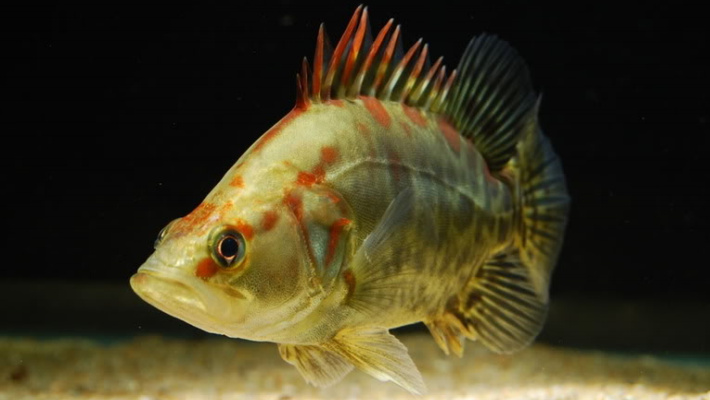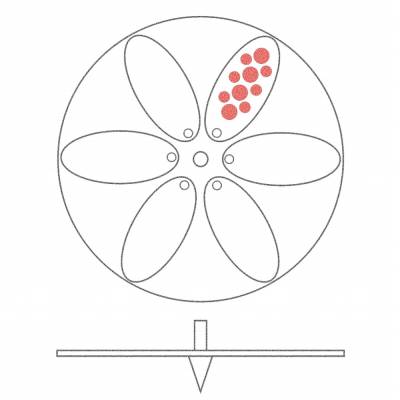|
Practically
all manufacturers of fishing spinners offer some tens of blade design patterns
and, of course, all these patterns are posinioned as effective. In fact, at the
typical velocity of movement of spinners in fishing and, in turn, the corresponding
velocity of blade rotation, the most part of these patterns is non-functional.
Figure
given below illustrates an usable visual tester that allows you to trace how
one or the other blade design pattern changes depending on the velocity of
blade rotation. The tester is like an ordinary toy whirligig. Paper
applications with the blade design patterns or even metal blades you would like
to verify are sticked to the flat transparent sector of the tester.
One of the
most known and applicable blade design patterns, with the silver holographic
back and red spots, is shown. For illustartion, only one blade is given. In general
case, you can stick two, three (placed symmetrically) or six blades, identical
or non-identical.
Rotating
the foregoing tester with the six red-spotted patterns, you will see with increasing
the velocity of its rotation the following typical picture:
1) clear flashing
of the red spots
2) merge of the red spots into the reddish circles
3) merge of the reddish circles into an aureole of lighter reddish color
4) finally,
an aureole will become colorless.
For example, click here to see how Mepps spinners move (at the constant velocity) in the water.
According
to the laboratory experiments (Gehres & Neumeyer, 2007; Stojcev et al., 2011), fish (goldfish, Carassius auratus) see as colored only slow-moving (2-4 cm per second) red and blue discs.
The so
called critical frequency of flash fusion (CFFF) in Northern pike, Esox lucius, (28 flashes per second) and
human (18-24 flashes per second) are sufficiently close (Protasov, 1978). In
adult roach, Rutilus rutilus, CFFF is
essentially less (16 flashes per second) (Sbikin, 1980). According to the same
author, in perch, Perca fluviatilis,
CFFF is higher (33 flashes per second). It means (reviwed by Protasov, 1978;
Sbikin 1980) that prech are able to discriminate flashing of visual objects at the
higher velocity than human, pike, E.
lucius, roach, R. rutilus, and other
fish.
Currently,
we are looking for world manufacturers to produce the foregoing testers,
printed applications and manuals. Moreover, we are interesting in
co-operation with software developers to create the corresponding computer
program.
Patent
pending. All rights reserved, © 2012
Please
address to Dr. Nick Yurchenko at fishermenadvocates@gmail.com
Basic References
Gehres M.M.,
Neumeyer C. 2007. Small
field motion detection in goldfish is red-green color blind and mediated by the
M-cone type. Visual Neuroscience 24,
399-407
Protasov
V.R. 1978. Fish behaviour. The mechanisms of fish orientation and their use in
fishing. Food Industry,
Moscow
Sbikin Y.N.
1980. Age changes in vision of fish in connection with the peculiarites of their
behaviour. Nauka, Moscow
Stojcev M.,
Radtke N., D'Amaro D., Dyer A.G., Neumeyer C. 2011. General principles in
motion vision: Color blindness of object motion
depends on pattern velocity in honeybee and goldfish. Visual Neuroscience 28, 361-370
| 







 SUBSCRIBE
SUBSCRIBE



